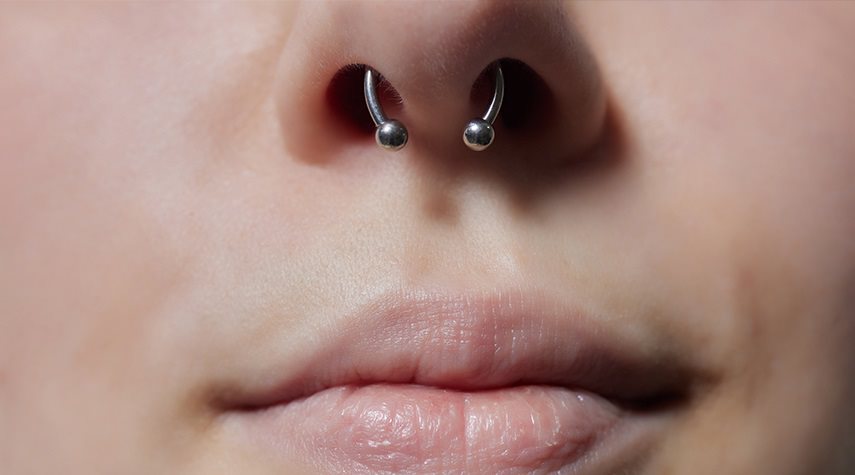Even if several famous people have had their noses pierced, you may be afraid to have yours done even though others have done it. Your entire appearance might benefit from the addition of a little sparkle or edge if you have a septum piercing since it is a one-of-a-kind item that looks incredibly amazing.
Septum piercings are flexible piercings that enable you to express several aspects of who you are, like going for a huge and bold look, going for a tiny and classic look, or going for a punk rock look. It is also simple to hide from anybody who you would want not to see it.
What Are Septum Piercings?
A piercing that goes through your nasal septum, also known as the area that divides your nostrils, is referred to as a septum piercing. After passing the needle through the thin layer of skin that is located closer to the front of the nose, the piece of jewellery, which is often a ring but may also be a horseshoe or bar, is then inserted into the hole.
You may also be familiar with the term “bull nose piercing,” which is used to describe a nose piercing that is performed using a piece of jewellery shaped like a hoop.
Read more: Best Ear Piercings To Keep You Ahead In Terms of Style
How Badly Septum Piercings Hurt?
The majority of piercings include some degree of pain. After all, a needle is used to puncture your skin, and the hole that it creates is later filled with a substantial piece of metal. It is important to keep in mind that everyone has a different threshold for pain but getting a septum piercing shouldn’t be much more painful than getting a regular nose piercing, and it shouldn’t go through the cartilage.
It will feel like a powerful pinch, you’ll probably have the want to sneeze, and your eyes will probably start to moisten, but hopefully not much more than that. When compared to other piercings, this one isn’t nearly as painful as others; in fact, it’s probably not even as uncomfortable as the average nose piercing. If you go to a skilled piercer, they will locate the soft place precisely in the middle of the cartilage.
How Are Septum Piercings Done?
Septum piercings are quite similar to other types of piercings, with the exception that the technique used to do them might vary. However, as a matter of course, your piercer will clean the region that is going to be punctured, and then they will use a little clamp to keep the septum in place.
After that, a cannula, which is a hollow needle linked to a tube, will be inserted into your nose, and then the jewellery will be inserted via the newly created hole. The piercing is finished when the jewellery, which is often a bar shaped like a horseshoe, is properly fastened.
Read more: Lip Flip Before & After
Potential Risk Factors To Consider
Just a handful. Getting your septum pierced by a skilled practitioner who is also well-known and respected reduces the chance of complications significantly. Here are some possible dangers that should be considered:
- Reactions and allergies: Certain piercing jewellery, particularly those that contain nickel, has the potential to bring on allergic responses in certain individuals. Make sure that any allergies are discussed with the piercer before the procedure.
- Infections: Germs can enter your body via breaks in your skin, which may then lead to an illness. This may result in the development of redness, swelling, discomfort, pus, or discharge.
- Septal Hematoma: If the piercing causes damage to blood vessels as well as the tissue that lines the cartilage, then a septal hematoma may form. This occurs when blood collects between the two structures. Because of this, discomfort, oedema, pressure, and congestion may result.
- Blood Diseases: When using needles that have not been sterilely processed, there is a possibility of developing blood-borne infections such as HIV, hepatitis B and C, and tetanus. Insist that the piercer uses only new, sterilised needles for your procedure.
- Scarring: When it comes to piercings in the septum, scarring is not an issue from an aesthetic standpoint since the scars are not visible. However, the development of scars and excessive scar tissue, also known as keloids, maybe a source of discomfort.
- Tearing: Your jewellery could get stuck on anything or be ripped out, but it all depends on the jewellery you wear.

